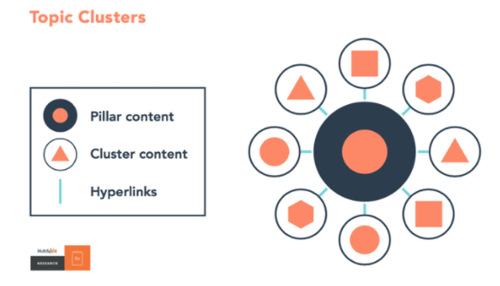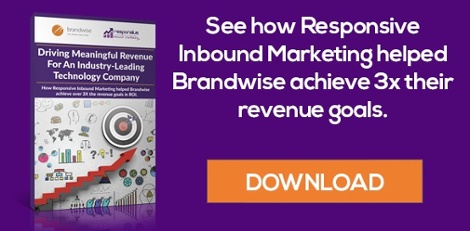How people search for information has changed drastically over time. From searching in the yellow pages or newspaper for a local business, to voice search on a smartphone. As people’s tastes and preferences have changed, search engines like Google have evolved with them. A few years ago, search was more keyword based. Now, Google’s algorithm recognizes topic-based queries. This should impact both your content and SEO strategy, as topic clusters have emerged as the new approach. 
What's Google’s primary driver behind the topic cluster approach? The first is the Hummingbird update in 2013, which allows for more conversational search and phrases over just keywords. Then in 2015, Google implemented the RankBrain update, which enables the algorithm to understand the intent and context behind a search.
How Your Content Needs to Evolve
As people's search habits continue to change, along with Google’s algorithm, you’ll need to adjust your content strategy to make sure it's working to attract your audience and generate leads.
[DOWNLOAD]

What Are Topic Clusters?
Your SEO strategy and best practices are an important part of increasing organic traffic. The volume of content being produced on the Internet along with the constant changes from Google can make it difficult for your company to get found.
This new cluster model for content is structured like a wheel. At the center is the pillar, or main content topic. Then, multiple pieces of content are created that relate back to the pillar piece, and contain a link to the pillar.
 Photo Credit: HubSpot
Photo Credit: HubSpot
So essentially, a topic cluster is a piece of pillar content connected to a related piece of cluster content, or subtopic, by a link (as shown in the image above).
What Makes a Pillar Page Effective?
Building links back to the pillar content, as well as in between the supporting content pieces, is a key part of using topic clusters effectively. These links signal to Google and other search engines that the pillar page is an authority on a topic, which can result in achieving a higher ranking over time. Keep in mind that the anchor text, or the part that is hyperlinked, needs to be the same in all of the cluster posts linking back to the pillar.
Using clusters also tells the search engines what content is most important, instead of having your pages with similar content competing with each other.
Your pillar content needs to be a broad overview of a topic so that it makes sense to link other pieces back to it, and so that you can easily create the subtopic pieces. Matthew Barby of HubSpot recommends optimizing your pillar content for conversions and focusing on generating traffic with your cluster content.
Does This Mean That Ranking Keywords Are Out?
Not quite. Think of the cluster model as as a new way of creating compelling content. You still want to give your audience the most relevant and useful information possible, and make it so that they can find it. With the cluster model, you can still use keywords. But think of it as taking a general keyword, which becomes the pillar content, and then writing content around several specific long tail keywords related to the general keyword.
Use your keywords as the starting point to develop your topic clusters, because they indicate topics your audience is interested in. You can also use Google to help you determine related topics to your pillar content. For example, if you type inbound marketing into Google, you can refer to the autocomplete options to get an idea of related topics.
Is Your Content Strategy Up to Speed?
Search engines will continue to evolve. And as technology advances, so will people's search behavior. Make sure your content strategy is keeping up with the changes.
Is this too much information for you? Do you get overwhelmed with all of the new updates in content marketing? Maybe it's time to think about hiring an agency, like Responsive Inbound Marketing, and letting them keep a pulse on all the changes. Here's a success story to give you some inspiration:
